Jet "Whale" in the sky of Korea. Fighter F3D "Skynight"
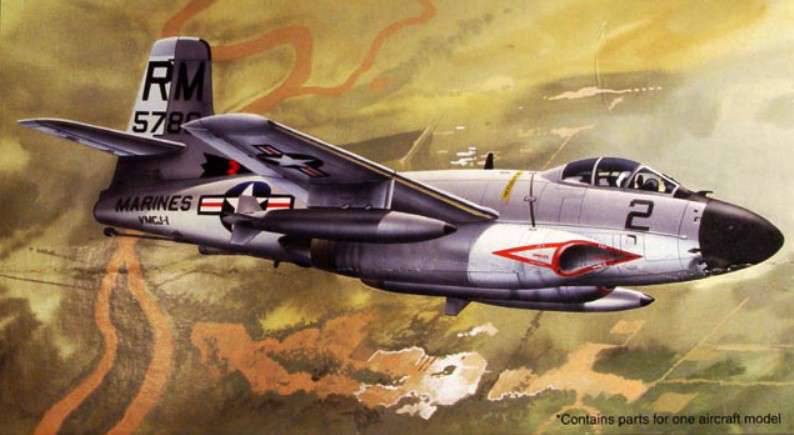
The appearance of night fighters is usually referred to 1940 year, when there was an urgent need to protect London from the raids of German bombers. However, the combat effectiveness of such fighters was extremely low, and this despite the considerable superiority over bomber in speed and maneuverability. So, during the most intense night raids on the British capital in December 1940, they shot down only two enemy aircraft.
The situation has improved significantly with the advent of radar means for detecting airborne targets. Fighters equipped with radars, in May 1941, already shot down more than 100 bombers, rushing to London. The practical application of these aircraft has shown that airborne radar facilitates the task of intercepting enemy aircraft, not only at night, but during the day. Especially at altitudes over 12 000 m and when flying in the clouds, where the enemy is difficult to notice, even from a short distance.
At the height of the war, it was extremely difficult to create special designs for night fighters, it was much easier to adapt serial light bombers and twin-engine fighters for this purpose. In Europe, such aircraft were Blenheim, Bofayter and Mosquito. In America, which was separated from the main theaters of war by the Atlantic Ocean, night fighters were not particularly in demand. Who especially needed such aircraft was the US naval forces operating in the immediate vicinity of the enemy airfields. Specially for fleet night versions of the Corsair, Hellcat and Tigerket fighters were developed.
After the end of the war, the greatest threat to US naval groups still came from piston-engined bombers flying at altitudes from 7500 to 9000 m, since the time of high-speed jet heavy vehicles had not yet come. To combat them, specialized night deck fighters were created, the design of which had to take into account the radar equipment and crew, which now included the radar operator. All this increased the size and flight weight of the machine.
The Douglas advanced development department, headed by Edward Heineman, took up the difficult task. The beginning of the design work on the all-weather nighttime interceptor, called the “Skynight”, can be attributed to the 1946 year. The plane turned out to be big, and it had to be equipped with two J34-WЕ-22 turbojet engines from Westinghouse, which had a maximum thrust of 1360 kgf. In order not to occupy the useful volume of the power unit in the fighter's fuselage, Heineman installed them in rounded gondolas along the sides of the aircraft. It also simplified the maintenance of engines, since they could be inspected through fairly large hatches made on the bottom surface of the nacelles. Also, such a layout simplified dismantling the TRD. The nose of the fuselage, thus freed from the air intakes, was entirely given to the radar station АN / АРQ-35. Under the station blocks, the designer placed four 20-mm guns.
The wide fuselage made it possible to arrange a spacious cockpit, where two crew members were stationed: the pilot and the radar operator. The designers did not install ejection seats on the fighter, the aircraft weighed more than 9 tons without them. The crew rescue question remained open for a long time until the designers found the original and simple solution. They designed a sloping tunnel behind the crew cabin, the hatch of which was normally closed by pilots' seats. In the event of an emergency, the crew turned the seat cups to the sides of the cabin and opened the hatch. At this moment, the tunnel cover was dropped from the bottom of the fuselage, and the protective cylinder deflected with a hydraulic cylinder. The latter was designed to protect crew members from oncoming air flow. They had to slip down through the tunnel. Perhaps this design was lighter than ejection seats, but clearly occupied large volumes of the fuselage. The tests showed that up to the speed of 800 km / h, this system allows you to successfully leave the plane. Interestingly, later 40 years a similar system was developed for reusable US spacecraft.
Heinemann's ineradicable passion for reducing the flight weight of the aircraft forced us to abandon the usual for American fighters fuel tanks at the wingtips. This made it possible to win both in the mass of the wing itself, since it was no longer necessary to take into account the overload from the tanks during landing, and in the weight of the folding mechanisms of the consoles. The designers also took care of reducing the aerodynamic drag - all external antennas were mounted flush with the skin.
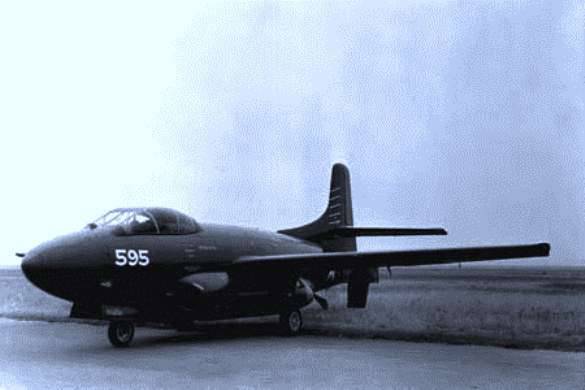
The construction of the first prototype was completed at the end of the 1948 of the year. And 23 March, she was taken to the runway. After a brief trial of the Skynight power unit (serial number 121457), it made its first flight. The second car flew into the air 6 June, and the third - October 7.
Upon completion of the evaluation of the main flight characteristics, one of the experienced aircraft made a flight to Myurok Air Force Base (Edward), where comparative tests of three different American fighter-interceptors manufactured in 1948 were carried out. Air Force leadership was looking for the best option for air defense. The most curious of these was the Curtiss XF-87 Black Hawk Fighter, a four-engine giant. The most promising was the Northrop XF-89 Interceptor Scorpion, which first flew into the sky in August 1948. It was he who was chosen by the USAF. Well, Heinemann's “Skyneit” lost to both rivals. Its maximum speed was lower than that of the XF-87 (at 120 km / h) and the XF-89 (at 160 km / h). The situation was even worse with the SkyKit climb rate, which barely reached the passenger car performance and was no more than 9 m / s, and as it rose to the height of 11000 m it decreased to 2,75 m / s. Similar "achievements" caused complete despondency in representatives of the customer. The only thing that distinguished the "Skylight" among other machines, it is excellent handling. Piloting the fighter was easily accessible to the pilot with the most modest level of training. To accomplish independent departure, the pilot literally had a couple of flights with an instructor. The second advantage of a stable and easily controlled aircraft was high accuracy. Here "SkyNight" was not equal.
Heinemann promised customers to improve the technical characteristics of the fighter, and Douglas was given a modest order to produce 30 aircraft. In the fleet, Skynight received the designation F3D-1. After analyzing the possible combat use of the interceptor, the Navy command decided to transfer F3D to aviation marine corps. Hydropneumatic catapults available on aircraft carriers did not allow the possibility of its deck use. F3D aircraft carrier flights have been able to produce only since 1952.
The first production car left the factory in February 1950 of the year. Heinemann kept his word: they put new powerful J34-WЕ-34 engines on the machine with maximum load in 1470 kgf. But the characteristics have changed slightly: the rate of climb has increased by 1 m / s, and the maximum speed by 52 km / h. Improved flight performance was greatly hampered by the large frontal resistance of a large car.
The entire series of fighters was transferred to three squadrons: VС-3 and VС-4 from the fleet aviation and VМF (N) -542 from the marine corps. The first two were involved in research programs, and the third was a combat squadron and was at that time in Korea. She was returned to the United States, where, based on the base of El-Togo in California, the personnel of VMF (N) -542 before the start of 1952, mastered the new aircraft.
Having started mastering the serial production of F3D-1, Douglas specialists began to prepare the release of its modification - F3D-2. The new version was designed for J46-WЕ-3 engines with a maximum load of 2180 kgf (these turbojet engines were also intended for the Catless fighter), but delays in supplies forced the company to start production with J34-WЕ-36 (maximum thrust 1538 kgf).
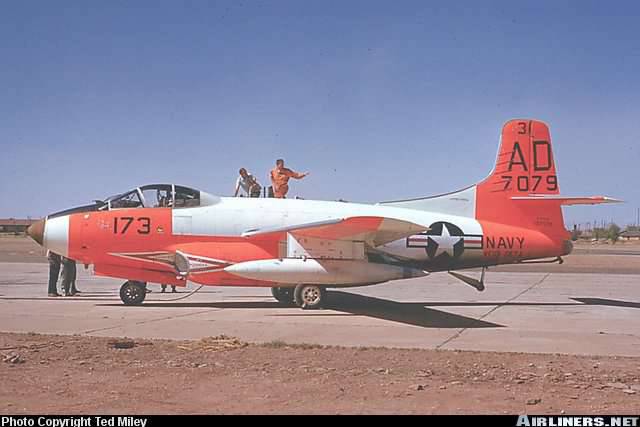
The first copy of the F3D-2 broke away from the February 13 runway of the year 1951. An important detail of this modification is the automatic electric flight control system G-3 manufactured by General Electric, which enabled the pilot to completely drop control in difficult weather conditions. A total of 237 aircraft were manufactured; the serial edition of the F3D-2 was completed in the spring of the year 1952.
At Douglas, specifically for the Korean War, a version of the F3D-2N was developed, which had a higher-performance radar, AN / APG-36. At the end of 1951, these aircraft entered the squadrons of VMF (N) -513 and VMF (N) -542. The first combat mission of VМF (N) -513 was the escort of B-29 heavy bombers. The “Skynights”, along with the F-94 military interceptors, “Starfire” went ahead of the order of heavy vehicles (at a distance of about 50 km) and, using their radar, looked through the airspace in order to timely detect Soviet MiG-15.
Early in the morning of November 3, 1952, major pilot Stratton, and radar operator Sergeant Hogling discovered the enemy's plane. Having approached him before establishing visual contact and identifying the enemy fighter in it, Stratton opened fire. Fighter fired up. This was the first victory of the skynights in the Korean sky. Arriving at the base, Major Stratton declared that he had destroyed the Yak-15, and that was how he, blinded by the flashes of his guns, recognized his target. Domestic sources claim that on this day Skytite was attacked by the MiG-15 fighter, which was controlled by Captain Vishnyak from the 147 Guards Iap. Our pilot managed to put out the fire that had arisen on the plane and put the MiG on his airfield. Literally a few days later, the repaired MiG-15 rose to the sky again.
Five days later, the second contact of the “Skyline” with the MiG-15 took place. This time, the crew of Captain O. Davis stepped on a Soviet plane on commands from the ground. After detecting the target, the onboard radar system Davis reached its maximum speed and began to move closer to the target. The American interceptor who piloted the MiG-15 senior lieutenant Kovalev of the 351-th iap did not see the American interceptor, so the crash of the 20-mm projectiles on the MiG's fuselage was a surprise for him. The Soviet aircraft lost control, and Kovalev catapulted.
12 January 1953, the crew of Major E. Duna met in the next night battle with the MiG-15, trying to attack the system of heavy bomber, striking a hydroelectric power station in Sunshine. The Soviet MiG was shot down. On January 28, Captain D. Weweyer and the commander of the 513 Squadron, Lieutenant Colonel R. Conley declared their victories over the MiG-15. Also in January, according to American data, two MiG-15 shot down I. McConep crew. Heavy interceptors had to face in the night Korean sky not only with modern jet aircraft. The Skynights managed to shoot down some slow-moving Charlie, as US pilots called the Po-2 biplanes.
The first combat loss of F3D occurred on 30 in May of 1953, when the crew of Captain D. Brown was lost. To this day, there is no official data on who and how shot down this interceptor fighter. No less mysterious is the loss of F3D-2N, piloted by the pilot of the 4 th squadron of Navy aviation B. Bick. It is known that near the island of Chkhod, the MiG-15 was managed to be brought down, but then the connection was interrupted, and this Skyline was never seen again. 20 July 1953 of the night patrol did not return another car from the same unit, which was the last loss of Skynights in Korea. True, these interceptors had no victories either.
While part of F3D participated in hostilities over Korea, in the United States actively continued tests of the aircraft. By the spring of 1952, the F3D-1 and F3D-2 began flying from the Midway carrier. In early summer, the same pair took off already from the deck of the Roosevelt aircraft carrier, really showing skeptics the possibility of using F3D from modern aircraft carriers. In the Navy, the interceptor quickly gained the nickname "Whale" for its wide and short fuselage and clumsy appearance. In general, the deck aviation pilots did not like the low-speed and under-maneuverable aircraft, and they were looking forward to the appearance of the Demon fighter in service.
At the beginning of 1947 of the year, specifically for the Skynight interceptor, Sperry began to design an air-to-air Sparrow missile to compensate for the slowness of the F3D. Over 6 years, the company has spent about 30 million dollars on research, development and testing. To speed up the design of the rocket and to ensure its large-scale production, Douglas took up the manufacture of rocket bodies.
Tests began in 1951 year by ground rocket launches. After making the Sparrow 150, one F3D-1 aircraft was equipped with four underwing pylons for testing this weapons in the air. At the first stage, they dumped mock-ups, then switched to interceptions of radio-controlled targets. After successful completion of the tests, the rocket was transferred to mass production. Douglas has upgraded the F28D-3 and F1D-3 aircraft into the F2D-3М and F1D-3М rocket carriers.
In the mid-fifties, the skynights were replaced by more modern aircraft. Aging machines were transferred to training units. 35 aircraft converted into radio jammer - F3D-2Q. The AN / APQ-72 radar was installed on several radars and the crews of the Phantom F-4 fighter jets trained on them for a long period of time. In 1962, all the Skynight aircraft in the fleet were given new designations.
The beginning of the sixties found the F-10 now on training and test airfields. On two TF-10Bs, Shrike anti-radar missiles were tested, and all E-10В electronic warfare aircraft were transferred to Vietnam, where they were to take part in another war. Skydive sorties began in 1965 year, from the Japanese airbase Iwakuni. These aircraft were incorporated into the 1 th Marine Infantry Wing, in the MAG-11 group. Quickly enough, EF-10В were replaced by more advanced EA-6А, after which the Skynights were removed from service. The Douglas management suggested replacing them with F3D-3, which had swept wings and new aircraft engines J46-WЕ-3, but the military rejected this proposal - Skytane left the scene forever.
Sources:
Chechin A., Okoletov N. Night “Skynight”. About Douglas F-3D interceptor // Wings of the Motherland. 2000. No. 12. C. 14-18.
Green, W., Cross, R. Douglas, F3D Skynight // Jets of the World. M .: Publishing house of foreign literature, 1957. C.138-139.
Chechin A. Reactive in Korea // Model Designer. Special edition. 2005. No.1. C. 56-64.
Chechin A. Sniper of the night sky // Model-designer. 1998. No.8. C. 30-31.
Zharkova A. “Skynight”: the most effective interceptor in Korea // World Aviation. No.75. C. 16-19.
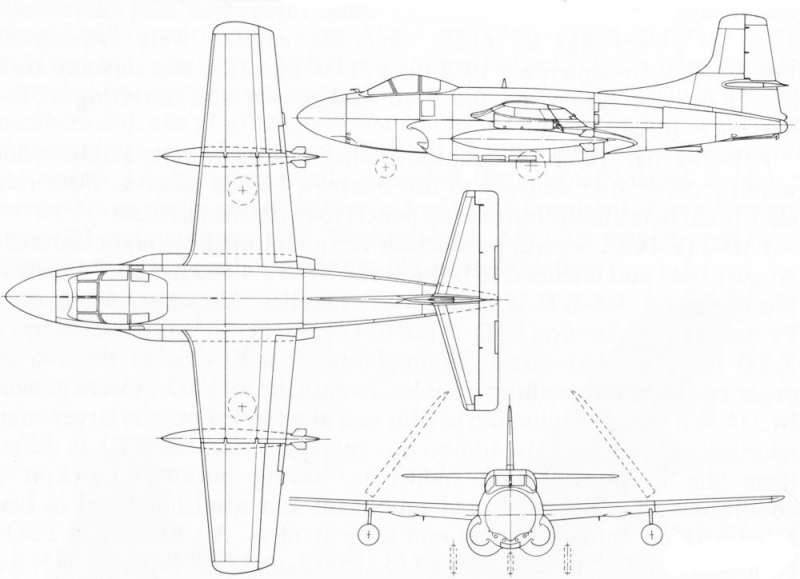
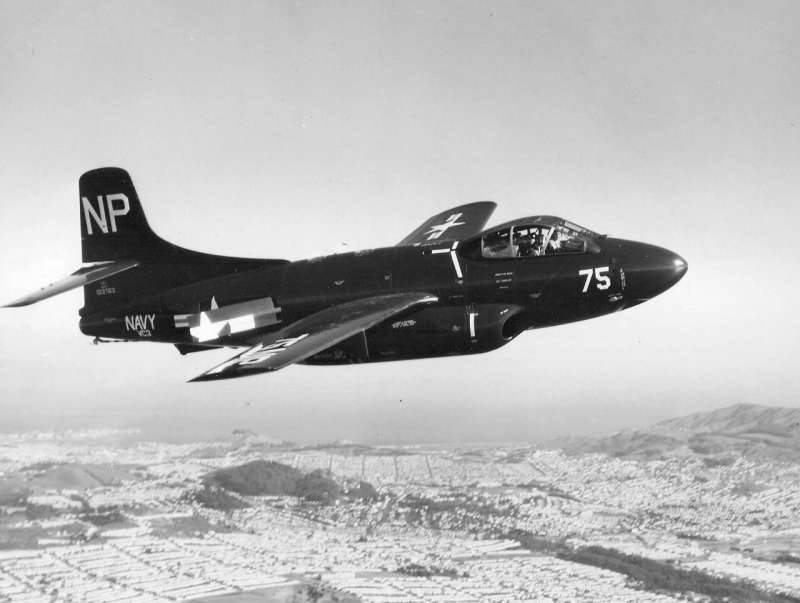
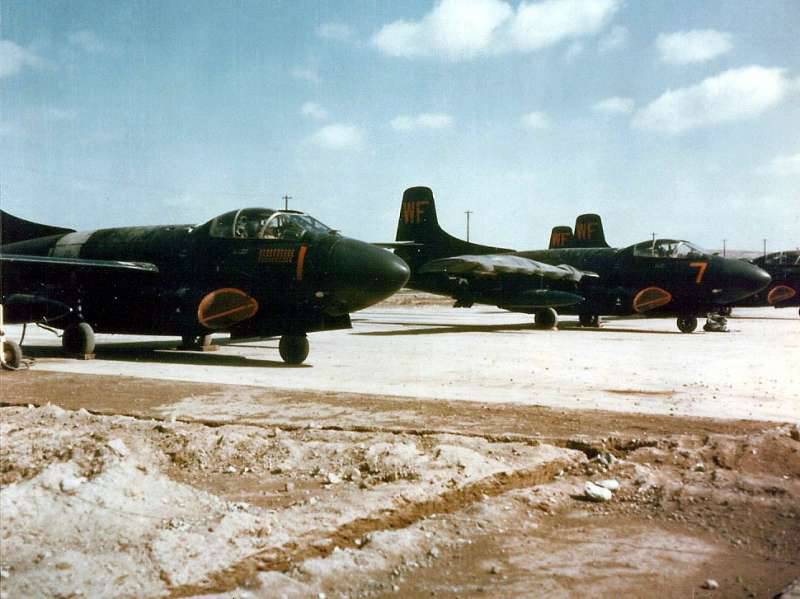
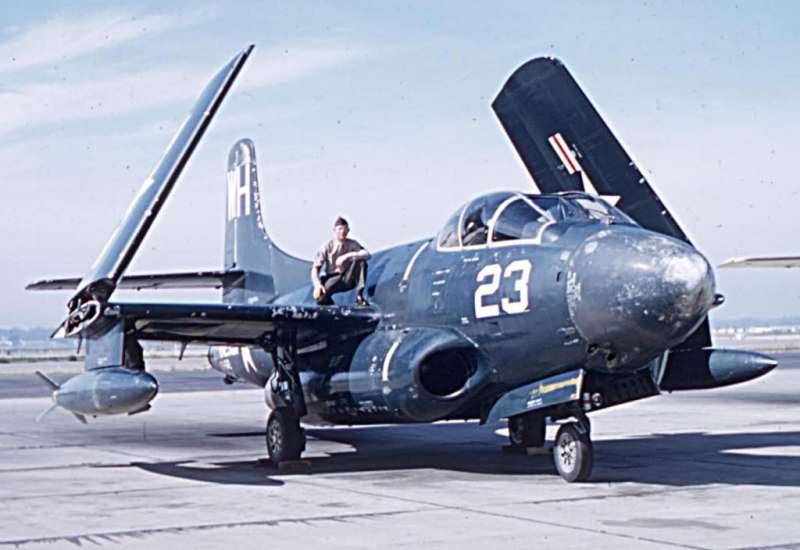
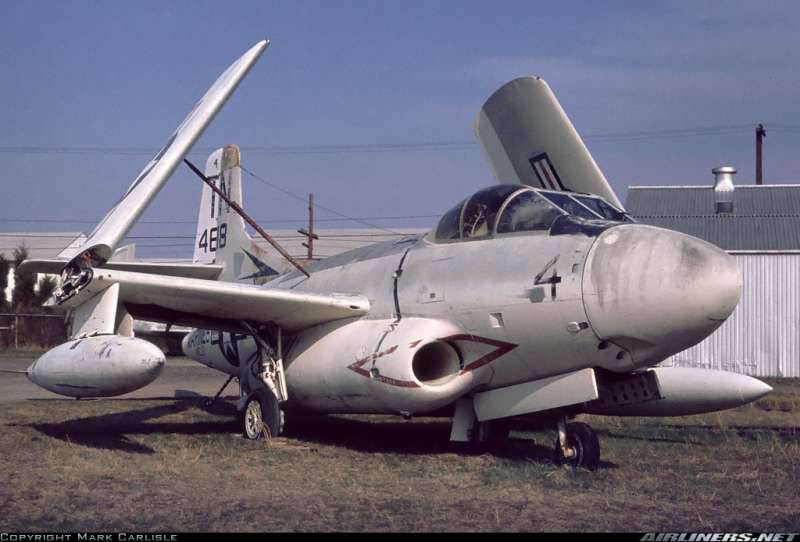
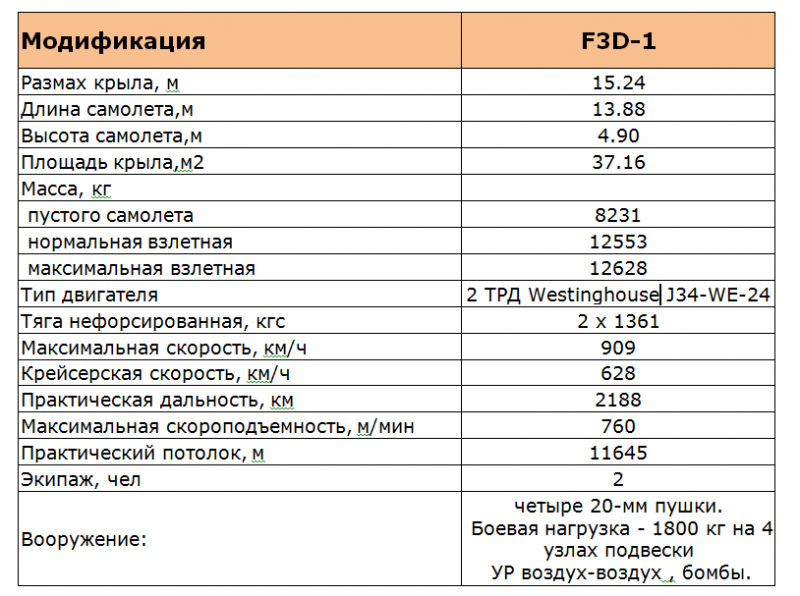
Information